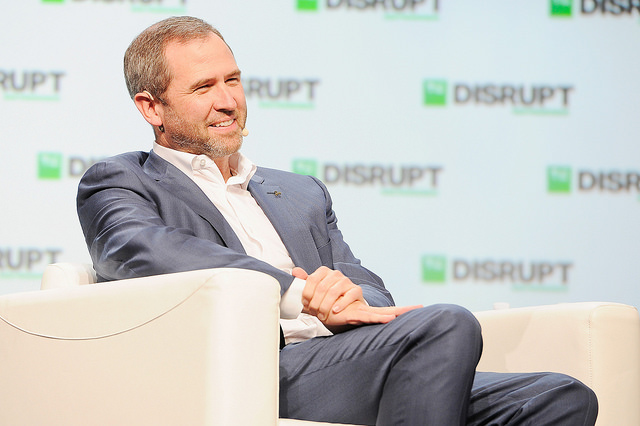Don't Miss
Ripple CEO Brad Garlinghouse unfolds the future plans of the company

Ripple’s XRP is one of the most considerable digital assets in the market today. However, lots of banks and other financial institutions are registered on its platform and have bought shares in the business. With the growing number of businesses registered on its network, Ripple wants to change the way money moves around the world.
Money transactions today are faced with a lot of friction, and this has stirred the desire for financial institutions to look for better innovations. In a video that got shared (and gone viral) by Twitter user @XRP_VETERAN, Brad Garlinghouse spoke on the future plans of Ripple, centering that in a few years to come, they could be a dramatic change in money settlements.
For Ripple and its followers, XRP is the foundation of liquidity management, and it is also the bridge between the banking system and digital assets that have the support of a Silicon Valley technology company. According to Garlinghouse, XRP is the bedrock to solving liquidity problems as today’s financial institutions are wired to a pool of capital accounts known as NOSTRO and VOSTRO Accounts.
He noted that these accounts are pre-funded between financial accounts – which means that the capital of the financial institutions is sitting dormant and getting used. By making use of a digital asset like Ripple’s XRP, the liquidity can be enabled in real-time.
Ripple understands the fact that liquidity shouldn’t be in an account, it should be wherever it is needed at any time, at any place, and the blockchain startup has done this by releasing XRP.
https://twitter.com/XRP_VETERAN/status/1056924150923714562
Ripple’s XRP has been created to solve the problems of cross-border payments and remittances in different parts of the world. Also, Ripple makes use of incentives to attract investors to trade XRP and intermittently sells XRP to these investors (including institutional ones), according to experts.
The Future Plans of Ripple (XRP)
Brad Garlinghouse stated that Ripple aims to change payment systems in the world (no surprise). The CEO noted that the firm intends to do this by working with financial institutions and making them familiar on how xCurrent works and also introducing how Ripple can help manage liquidity.
Garlinghouse further emphasized that there is a lot of friction concerning payments, but introducing XRP to these institutions will take time. He believes that introducing Ripple will take a gradual process and soon we should see lots of banks and other fintech institution adopting Ripple (XRP). Garlinghouse also claimed that Ripple’s XRP is the only digital asset that has real customers solving real problems.
Ripple (XRP) Ahead
Ripple has been successful in keeping the users highly-engaged, and that’s due to its notable strides in the past few months. The blockchain has secured good partnerships, and in the month of September, as it partnered with three companies, it further increased its level of mass adoption.
Probably, Ripple’s XRP has become the most critical cryptocurrency in the market right now. Overall, if Ripple continues to progress and advance on its quests, we may see it replacing other financial payment systems in a few years to come.
For real-time trade alerts and a daily breakdown of the crypto markets, sign up for Elite membership!
Disclaimer: This article should not be taken as, and is not intended to provide, investment advice. Global Coin Report and/or its affiliates, employees, writers, and subcontractors are cryptocurrency investors and from time to time may or may not have holdings in some of the coins or tokens they cover. Please conduct your own thorough research before investing in any cryptocurrency and read our full disclaimer.
Image courtesy of Flickr
Don't Miss
A Guide to Exploring the Singaporean ETF market

Singapore’s Exchange Traded Fund (ETF) market has grown, offering investors diverse investment opportunities and access to different asset classes. As the market evolves, investors must navigate these uncharted waters with a clear understanding of Singapore’s ETF landscape. This article explores the trends, challenges and strategies for navigating the Singapore ETF market. To start investing in ETFs, you can visit Saxo Capital Markets PTE.
The Singaporean ETF Market: Exponential Growth
The Singapore ETF market has seen significant growth in recent years, with an increasing number of ETFs covering a wide range of asset classes and holders. different investment topics.
One of the notable trends in the Singapore ETF market is the growing diversity of available options. Investors can now choose from ETFs that track domestic and international stock indexes, bonds, commodities, and specialist sectors or themes. This diverse range of ETFs allows investors to create comprehensive portfolios tailored to their investment goals.
The growth of the ETF market in Singapore is also due to growing investor demand for low-cost, transparent, and accessible investment vehicles. ETFs offer benefits such as intraday liquidity, real-time pricing, and the ability to trade on exchanges. These characteristics have made ETFs attractive to retail and institutional investors who want exposure to different asset classes.
Regulatory Landscape and Investor Protection
The Monetary Authority of Singapore (MAS) is the…
Don't Miss
Property Loans for Foreigners in Singapore That You Must Know About

Intending to invest in a residential or commercial property in Singapore?
When it comes to foreigners applying for a loan in Singapore, things can be pretty hard regardless of the reason whether you need the property for personal or business purposes.
In Singapore, buying a property is challenging, whether you are a foreigner or a native, and sometimes applying for a loan is the only way for you to afford it.
HOW MUCH CAN YOU BORROW FOR A PROPERTY LOAN IN SINGAPORE?
As for the Foreigner Loans, in Singapore, there is an exact amount of money you can borrow to finance the purchase of a property.
In this sense, Singapore has the Loan to Value Ratio (LTV).
The LTV ratio is what determines the exact amount of money you can borrow for a property loan, which changes depending on where you try to obtain the loan:
- If you are applying for a bank loan, you can borrow a maximum of 75% of the value of the property you want to purchase. That means if you are looking for a property that costs $500.000, the maximum amount of money a bank lender can give you like a loan in Singapore is going to be $375.000.
- When you are applying for a loan with a Housing…
Don't Miss
CoinField Launches Sologenic Initial Exchange Offering

CoinField has started its Sologenic IEO, which is the first project to utilize the XRP Ledger for tokenizing stocks and ETFs. The sale will last for one week and will officially end on February 25, 2020, before SOLO trading begins on the platform. Sologenic’s native token SOLO is being offered at 0.25 USDT during the IEO.
Earlier this month, Sologenic released the very first decentralized wallet app for SOLO, XRP, and tokenized assets to support the Sologenic ecosystem. The app is available for mobile and desktop via the Apple Store and Google Play. The desktop version is available for Windows and Mac.
“By connecting the traditional financial markets with crypto, Sologenic will bring a significant volume to the crypto markets. The role of the Sologenic ecosystem is to facilitate the trading of a wide range of asset classes such as stocks, ETFs, and precious metals using blockchain technology. Sologenic is an ecosystem where users can tokenize, trade, and spend these digital assets using SOLO cards in real-time. The ultimate goal is to make Sologenic as decentralized as possible, where CoinField’s role will be only limited to KYC and fiat ON & OFF ramping,” said CoinField’s CEO…
-

 Blogs6 years ago
Blogs6 years agoBitcoin Cash (BCH) and Ripple (XRP) Headed to Expansion with Revolut
-

 Blogs6 years ago
Blogs6 years agoAnother Bank Joins Ripple! The first ever bank in Oman to be a part of RippleNet
-

 Blogs6 years ago
Blogs6 years agoStandard Chartered Plans on Extending the Use of Ripple (XRP) Network
-

 Blogs6 years ago
Blogs6 years agoElectroneum (ETN) New Mining App Set For Mass Adoption
-

 Don't Miss6 years ago
Don't Miss6 years agoRipple’s five new partnerships are mouthwatering
-

 Blogs6 years ago
Blogs6 years agoCryptocurrency is paving new avenues for content creators to explore
-

 Blogs6 years ago
Blogs6 years agoEthereum Classic (ETC) Is Aiming To Align With Ethereum (ETH)
-

 Blogs6 years ago
Blogs6 years agoLitecoin (LTC) Becomes Compatible with Blocknet while Getting Listed on Gemini Exchange















